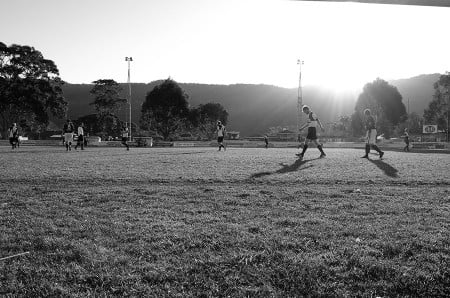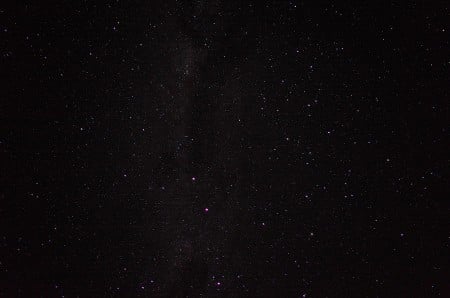When you decide to get shooting, you’ll find you can touch your way around the Leica T to get it working. In fact, that is the only way to get it working, and that’s a shame, as the menu is a touch unorthodox and a little slow. Honestly, we’d read the manual if you get confused, which is likely to be easy.
Essentially, it works like this:
There are three icons on the right side, with the first one sending you to the control mode (program, aperture, shutter speed, manual, or an auto mode). A camera icon in the middle brings up all your settings, or the ones you’ve selected to come up from another menu, with each of these options leading to another menu deeper in the camera.
There are lots of menus, that much you need to know, and if you want to set any of them, make sure to press the “SET” button at the top right inside of them, otherwise nothing will happen. Finally, there’s an “info” icon, which doesn’t show you info on your last shot, but rather rotates you through the info that will show on your display.
You can also swipe down from the top of these icons to lock them down, making it hard to fiddle with them if you don’t want to change anything, you know, in case you know anyone who might want to fiddle with your settings.
Or even do it by accident, because there are a lot of menus, and a lot of submenus, and enough settings to poke a stick at, and rather than map them to specific buttons like other cameras do, Leica wants you to use these through options on the touchscreen, which is nice to look art, but feels clunky in use, forcing you to press and swipe through layer after layer to get things done.
Once you have set everything up, however, you can get to shooting, because it’s here that the Type 701 excels, taking lovely photos.

Colour or black and white, it doesn’t matter, because up close, the images look excellent, and Leica has some excellent monochromatic profiles if you decide to go old school and shoot with a look of silver gelatin, matching the camera and its history beautifully.
Noise tends to creep in above ISO 1600, hardly a surprise, but overall, if you’re shooting with plenty of light and an understanding of exposure, you’ll likely find some good shots are possible, and with an ability to shoot both JPG and RAW’s Digital Negative, there’s room to move.
We didn’t spend too much time with the camera at night, but if we decided to, we’re delighted to see a flash built in, which flips up when you push the power switch too far.

After shooting the photos, playing them back will be the one thing you’ll want to do, but this is a little hit and miss, and works in one of two ways.
The first one is to use the touchscreen interface to play your photos, and that involves some swiping gestures to flick them on the screen. When they’re loaded from the memory, zooming into images is fast, but when you swiping new ones onto the screen and browsing through your history, the experience is sluggish, and not the sort of thing you expect from a camera of this quality and craftsmanship.
It’s a similar problem if you decide to use the WiFi feature, which in theory will let you transfer images from your camera, but only if you use an iPhone and only if you’re connected to a network at the time.
It seems strange that Leica’s sibling brand that is Panasonic has Near-Field Communication in its cameras, as well as support to send the image straight from the camera to a phone by creating a mini WiFi network between the two devices or using Bluetooth, and yet Leica’s more expensive camera does not.
We’re not impressed either, though, that to make this happen you can only really use an iPhone app, and it’s not a great one at that, reading everything on the card or the storage in the camera, thumbnail by thumbnail, which if you have a lot of photos, leaves you waiting for the list to load before you can really do anything.
If you don’t have iOS or want to move files over using a computer, you can connect using a web browser and take a gander through a rudimentary version of what is technically the same interface, albeit one inside of a tiny web page, but we wouldn’t recommend it.
Like the app, it’s slow, clunky, and forces you to wait for the card reader in the camera to create thumbnails for every image.
Seriously, just take the card out of the camera or plug the body directly into a computer using a microUSB cable. You’ll save yourself some time, frustration, and the realisation that Leica’s best efforts were out there chiselling aluminium into the right shape and make great glass, not building a good WiFi image transfer system.
We’re also surprised by the omission of a dust filter.
Seriously, there is no dust filter in this camera, and if you, heaven forbid, get dust on the sensor, make sure you have a blower with you, because otherwise there will be no getting it off your future images.
That’s a seriously odd feature to skip out on, especially since pretty much every other interchangeable lens camera has a form of dust removal feature built in, regardless of how well it works, or doesn’t. But not Leica, because that doesn’t exist on the T model Leica, and that confuses us greatly.

Our biggest dilemma with the Leica T, though, comes down to price, and this thing is staggering in terms of how much you’ll be charged for the privilege of using it.
Let’s start with the body only price: $2300.
Yes, that’s a two with a three and two zeroes next to it, and no, we’re not joking. That’s the sort of moolah you might expect to pay body only for an enthusiast DSLR, not so much a mirror-less.
And yet.
But that doesn’t even factor in the cost of a lens, and for the Leica T, you’ll need special glass made for the T series. With only two lenses out there, you won’t find a lot of choice, with the 18-56mm f/3.5-5.6 grabbing another $2300, and the fixed 35mm f2 fetching $2500.
We can’t help but bite our fists when we see these sorts of prices, though we do need to note that there will be a converter to make Leica glass from Leica’s other mounts work on this camera. They’ll likely be manual only, but at least the option will be there, since only two lenses — two relatively short lenses — isn’t much to work with.
In general, though, you’ll need to pony up close to $5K if you want the Leica T, and while that might be typical Leica pricing, it isn’t really value for money, even with that impressive body made from aluminium.
Make no mistake, there are better digital cameras out there, with more lenses for their subsequent systems. Really, what you’re paying for appears to be the brand and the Leica glass, and while that last one is good, focus distance on this lenses isn’t impressive enough to make us forget about the cost. Just no.
Even the accessories come with that high price, with the electronic viewfinder fetching $700. We know that Leica is also making other straps, SD card holders, a small flash head, camera holsters, and even a bag or two, and while we don’t know the prices, given everything else in the Leica T family, we don’t expect these will be cheap.

Conclusion
Leica’s T is an unusual beast, with the resulting product being the sort of product you’d buy if you wanted a mirror-less camera, but needed something that sat in the upper echelon of camera spending money.
That said, it’s hard to recommend the Leica T to anyone, unless perhaps they have so much money that they can’t be seen without something as luxurious as a Leica, instead of say something from Olympus, Panasonic, Nikon, Canon, Sony, Samsung, or any other camera company out there.
If this is you, fantastic, and once you’ve spent the money, you’ll probably have a brilliant time with the Leica T, but if it were us, we’d probably invest in a proper Leica digital rangefinder since it will have more lenses in its system, and you’re already talking about spending several thousand more than other brands already.








































